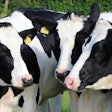Merck Animal Health and Tyson Foods established a $500,000 gift to the College of Agriculture and Life Sciences’ Poultry Science department to build a new research facility at Texas A&M University.
The laboratory represents a coordinated effort to enhance the research, outreach and educational capacity for the benefit of the field of poultry science. Scientists will focus on solving intestinal health issues in poultry at the new Biological Safety Level-II (BSL-II) facility.
“This gift from Tyson Foods and Merck Animal Health demonstrates their commitment and leadership to the field of poultry science,” said Dr. David Caldwell, department head for poultry science. “As the poultry industry evolves, the need for both applied and basic research to evaluate management, nutritional, and technological approaches to maintenance of intestinal integrity and bird performance, health and welfare is increasing.”
Intestinal health is essential to commercial poultry production as a healthy intestine can digest and absorb nutrients resulting in improvements in bird performance and animal welfare.
This is important to Texans because the Texas poultry industry contributes approximately $4 billion per year to the state economy and consumers spend $95 billion a year on poultry in the U.S. “This investment by Merck Animal Health and Tyson Foods demonstrates their proactive approach to advancing the understanding of the impact of changing industry practices on intestinal integrity and ways to mitigate challenges to bird health,” said Dr. Patrick Stover, Vice Chancellor and Dean for Agriculture and Life Sciences at Texas A&M University. “This collaboration will facilitate scientific discovery with direct industry application in the support of student education and key stakeholders in animal agriculture.”


















